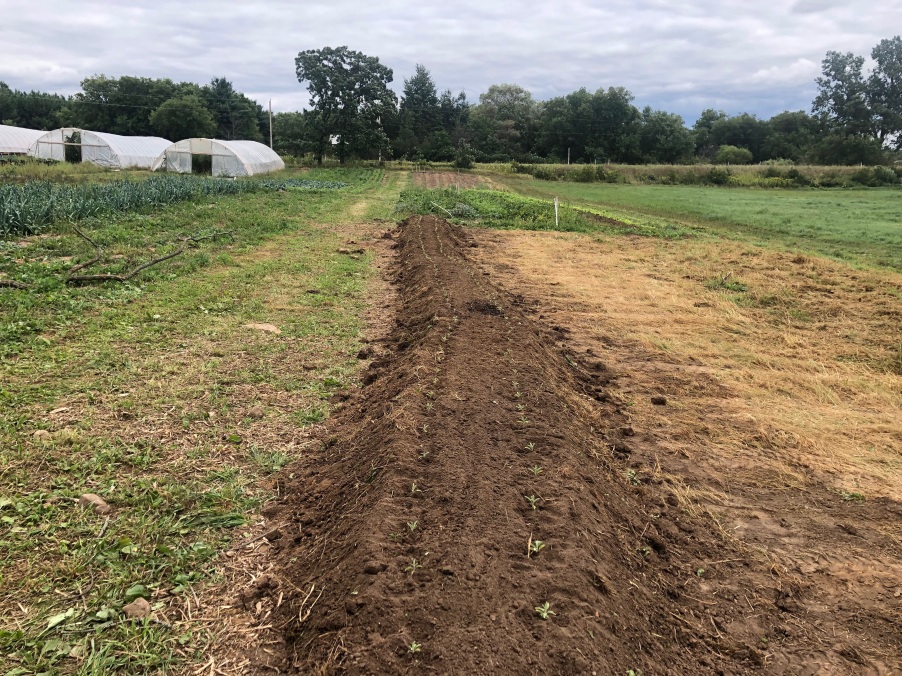Red’s Bed
I got an early start Wednesday and roared out of town in our beastly F-350, fully loaded with a bed and trailer of woodchips. I had them mostly unloaded by the time Monica showed up to take care of the animals, and Red walked down the hill as I assessed the scene. It was an overcast and uninspiring morning. “Dude,” I asked him, “You wanna build a Hügel bed this morning?”
“Sure,” replied the generally agreeable Red. “I don’t know if we’ll get it done this morning, but we should be able to today.”
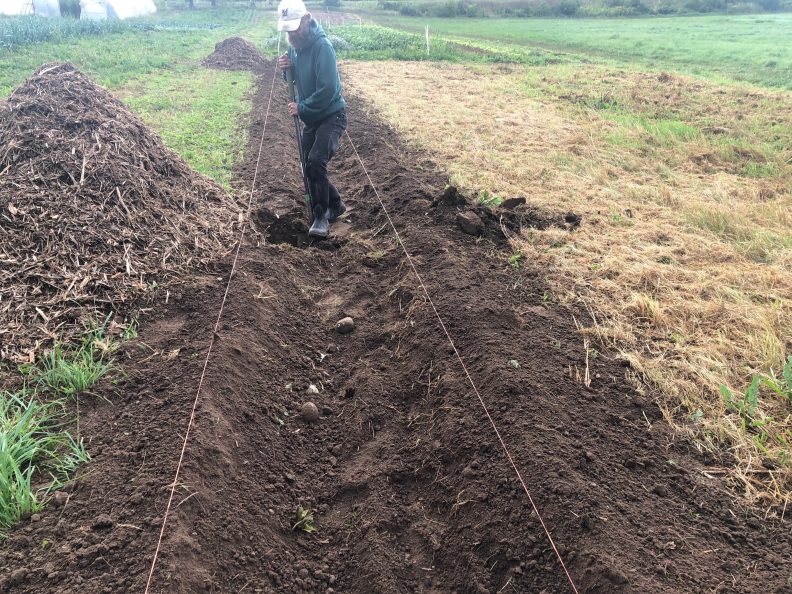
With utter faith in Red, and total inexperience in Hügelkultur, I grabbed the BCS and began plowing while Red gathered the shovels, and marking stakes and lines. A half hour later, I’d plowed the first passes, we’d marked the plot, and Monica, Corrina, Red and I were knee deep in our trench, and on our way to RSO’s very first Hügelkultur plot.
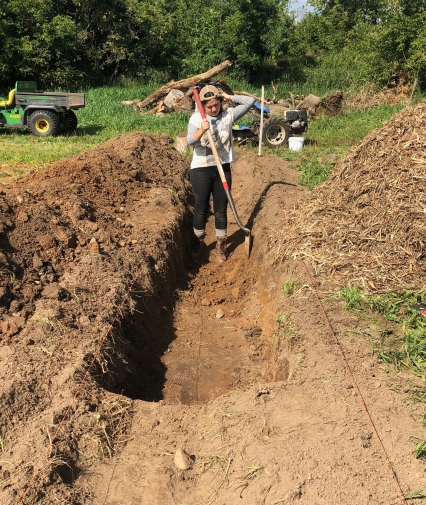
Hügelkultur is a concept I was introduced to a few years back at New Hampshire Permaculture Days, and have read about on multiple occasions since. The basic premise is that you dig a trench, fill it in with a gradient of wood scraps — largest logs on the bottom, to smaller brush on top — top it relatively tightly with woodchips to ground level, and replace the soil on top, making a raised bed. The wood serves many functions: breaking down to introduce a plenitude of worm and microorganismal life to the plot; serving as a sponge to hold water, and releasing a steady flow of nutrients into the soil for years to come. In addition, the raised nature of the bed can resist flooding in spring thaws, and serve as an ideal growing space for perennial herbs.
In concept, it seemed pretty simple; a veritable morning’s worth of work. I hadn’t quite visualized the scale of Red’s vision, however, but I started to come to terms as he introduced the dimensions of the trench. “See, it’s easier to dig all the way down in one spot, and make a nice square trench — we’re going down at least two shovel heads from ground level — and work back. That way, you don’t have all the dirt falling in all over the place.” The trench was big and the project sizable, but we picked our spots and got to digging while we discussed the “battle-board,” a 4′ x 12′ whiteboard we picked up, to lay out all of our plots visually and help with organization.
“Yeah,” Red carried on enthusiastically, “I think that’s the primary difficulty around here, from what I see. With so many owners, there’s just a lot of lapses in communication about what was done from day-to-day and everyone’s making different decisions. I think once the board is all worked out, and there’s more systems in place, this cooperative model will work out really well…”
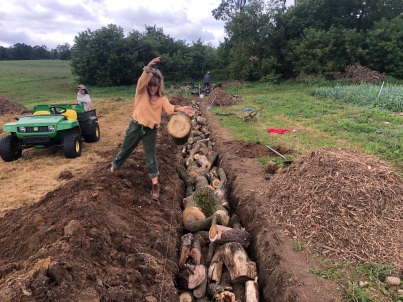
We had a good start by 9 when our workshare Justin rolled in. “Wanna tell him what he’s doing, Red?”
“Sure… Alright, grab a shovel; we’re gonna be digging out this whole marked off area to two feet deep. The best way is to…”
“Wanna tell him why he’s doing it?”
“Oh, sure. So, my grandfather, Hügel Robiataille, came up with this method…”
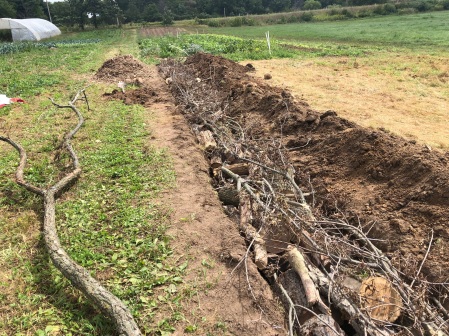
An hour later, we were just about done with the trench. A half hour after that, I had a new blade on my chainsaw, shredding some additional logs and brush for the top layers. By lunch time, we had the trench filled in tightly with wood chips and level with the ground. By mid-afternoon, we’d replaced the soil, shaped our beds and transplanted two rows of sage. By Friday, in typical RSO fashion, someone had dug up our sage, replaced it with thyme, and changed our planting pattern to three rows per plot.
By Saturday, I had some time to kill after market, and spent it cutting up a bunch more wood for more Hügel beds in the adjacent plot. There’s something intoxicating about the alteration of a landscape, and it feels awesome to take something I have seen and learned in books for years, and just do it. I want more of it. By the end of fall, hopefully we’ll have 6 Hügel beds completed, and if me and Red set our minds to it, I’m sure we can get it done.
